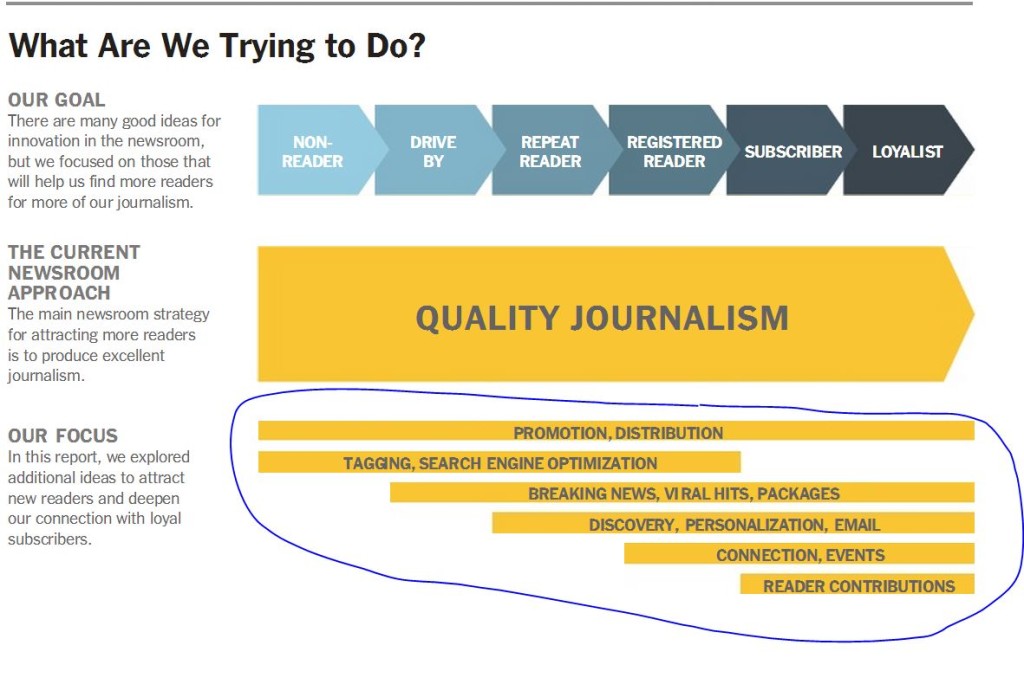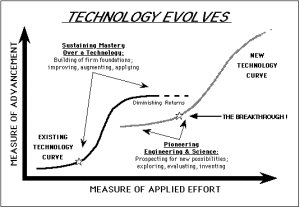 Nice Car, lets drive! The Social Media Road Trip
Nice Car, lets drive! The Social Media Road Trip
For business and social media, the road trip started around 2005 without much of a map. By 2010 many businesses were on their way to joining the road trip and adopting. Today, it appears we may be at an intersection. What turn do we take? What road are we on? Do we care about the real potential or is social marketing satisfactory? Does it matter? This is not a “social media is dead” long live social post, rather it is where do we go from here?
There are fundamental differences between traditional business organizations and their strategies and those needed to connect in a digital and mobile and social era. Some of those difference include:
- The power of networks; and the enhanced power in the hands of the customer;
- The media market place and the resulting impact on how business thinks/communicates and adopts to its role as a publisher and a business
- The interactivity that can exist between among customers themselves and/or with brands/businesses
- The mobility and speed of communications
- Technology and data is changing everything
- What I refer to as the swirling mass versus the linear hierarchy
- The technological leap frog that happened in 2010 as customer/consumer tech outpaced traditional legacy business technology.
 Adoption of social media, but where does this road go? Altimeter recently published a report on digital transformation noting, “social media’s progress is most often hindered by the absence of a common vision for what’s possible, as well as an enterprise-wide appreciation for its business impact. The difficulty of connecting business priorities and objectives to social media initiatives often leaves it stunted, with limited budget and resource allocation.”
Adoption of social media, but where does this road go? Altimeter recently published a report on digital transformation noting, “social media’s progress is most often hindered by the absence of a common vision for what’s possible, as well as an enterprise-wide appreciation for its business impact. The difficulty of connecting business priorities and objectives to social media initiatives often leaves it stunted, with limited budget and resource allocation.”
If Altimeter’s report didn’t grab your attention about the implications for organizations’ lacking a clear and common vision or what happens when you don’t have an enterprise-wide appreciation for the broad ranging impact of social media and interactive networks on your business, along comes the internal New York Times Report on “Innovation.” Josh Bolton at Neiman Lab calls it one of the most remarkable documents he has seen; Scott Monty said it was a bombshell every business can learn from; Mathew Ingram at Giga Om said the paper’s own internal report details that its culture is out of sync with reality. I say, just go read the report (see related links at the bottom).
It has great background on what “disruption” means and how it happens; a look at the competitive landscape ( a must read for any media relations PR pro, page 18, see also this blog post for more food for thought) and a wealth of information about the digital and mobile age we live in. It also examines how organizations and departments (forget that it is a newspaper, it goes beyond that) may lack the knowledge, expertise or ability to be in touch with each other, their markets and the fundamental need to “re-assess”. In fact, the NYT report really focuses on a traditional business organization and culture adjusting to new business realities. This report may be titled “Innovation;” it is about, in fact, an organization’s abilities to adopt, change, as well as to innovate. As is noted early in the report:
“It should be stated explicitly that there is no single transformational idea in this report. Transformation can be a dangerous word in our current environment because it suggests a shift from one solid state to another; it implies there is an end point. Instead, we have watched the dizzying growth of smartphones and tablets, even as we are still figuring out the web. We have watched the massive migration of readers to social media even as we were redesigning our home page. Difficult new questions will arrive with each new shift. In all likelihood, we will spend the rest of our careers wrestling with them. The leader of another organization called this era, “A period of muddling through.”
While the report notes that The Times’ journalism/ “content” is great (and it is) — the real emphasis in “mudding through” has much to do with what they call “audience development.” Ive called this the issue of connectivity in the avalanche of information. Some of the specifics the Times report looks at include:
- discovery — how information is packaged and distributed,
- promotion — how to gain attention for your content, and
- connection — how to create a two-way relationship with readers that deepens loyalty
Traffic on the Road: InBound, Outbound…oh and how about this: “Stick Around”
Here is graphic from the NYT report. Notice the segments at the top. They are not just “inbound and outbound” but they also include “stick around” – something business content marketing needs to think long and hard about.
Does your social marketing take into account the “audience/market segments” and have a sophisticated view of the kind of things (circled) that you need to do to develop your customer relationships or is your organization simply pushing content out onto the Web without these kinds of clear understandings related to sophisticated segmentation and community relationship development?
Questions of organizational adoption abound. What is the correct road map? How do we move forward? If Altimeter and the New York Times Reports didnt convince you to take a look and think deep about social media and your business, another piece of news came to the forefront this week: Scott Monty is leaving Ford. Scott is a pioneer and true leader on the use of social media by large companies. I am just one of the many who have been sending accolades his way and trumpeting his accomplishments.
His departure, however, stirred up a debate and lively discussion over on Facebook (started by Shel Israel). Shel said, “It makes me fearful that social media will just become another channel for outbound marketing messages, when it can be so very much more. We are in a time when people just don’t much trust big organizations. It seems to me short-sighted for them to leave conversations behind and cling to last-generation message mongering.” In a related post Shel also noted: “I think marketing has taken over corporate social media and is currently making the very significant mistake of treating it like mass marketing, as we enter into an era that Robert Scoble and I call the Age of Context where mass micro marketing will be what succeeds. Technology now allows personalization between companies and their constituents. But personalization requires companies to be personal, which remains culturally daunting for them.” As I prepared to post this, the summary of the Facebook exchange was posted to Forbes by Shel in a piece called “Will Brands Kill Social Media”
Scott in an Adweek interview noted “I think it’s at a critical juncture right now. With all the commentary that’s been going on about Facebook and the loss of organic reach, obviously, how the paid component to social evolves is critical. Outside of Ford and looking at the industry overall, it saddens me how social has been co-opted by marketing to become just another mass advertising/marketing channel. I think the promise of social is about relationship development, and I have always said that. All the talks I’ve given about Ford’s progress has concentrated on attention and trust.”
Take the Curve in the Road, Over the Bridge
Before this all occurred, I was thinking about how “tried and true strategies, tactics and other best practices that are “proven” to drive results are sometimes misaligned to a unique market, technology, or organizational requirement for realizing future business opportunities and breakthroughs.”
The innovation curve or “ S-curve” helps explain how a product, service, technology or business progresses and evolves over time. As was pointed out to me some time ago (by a long time manager, mentor and friend at Dell Manish Mehta — and before we worked together in social, he is now at Spredfast),the innovators curve has this little plateau…where you either settle in (and potentially fail and fall behind) or you keep ahead of the pack by innovating and adapting more. Perhaps that explains where we are today. The easy part of the adoption has happened (brands are publishers, marketers are allocating money, although their connectivity may be questioned, communicators think about social, etc). The question remains are we really across the bridge and ready to take the curve in the road to the next phase.
S Curve and related article: http://carteblancheleeway.wordpress.com/tag/s-curve/
 Have we Plateaued? Is it just Business as Usual Now?Perhaps social media adoption is hitting that plateau in the innovators curve? Is that good enough – for some it may be. For others the real opportunities come in the next part of the “S” curve. I posed a series of examples where social had the potential to really create beautiful and more connected businesses last year. Getting there might take a lot of hard work. It could mean:
Have we Plateaued? Is it just Business as Usual Now?Perhaps social media adoption is hitting that plateau in the innovators curve? Is that good enough – for some it may be. For others the real opportunities come in the next part of the “S” curve. I posed a series of examples where social had the potential to really create beautiful and more connected businesses last year. Getting there might take a lot of hard work. It could mean:
- Vision beyond business comfort zones: Not only is a real vision for adoption and meaning required (ala the Altimeter report) but that there needs to be strategies and actions around that vision and some of it goes beyond traditional business comfort zones.
- Openness to new standards: That real adoption of social requires looking at new strategies and tactics across a business not just thinking in terms of traditional best practices, tools and equivalent measurements.
- Understand that social does not neatly compartmentalize within traditional hierarchies and functions and that, in fact, business bureaucracies are based on efficiency, specialization, compartmentalization and hierarchy – those are fundamentally at odds with social networks and millennial thinking. It does not neatly fit a single department, especially one that is focused on mass and media markets
- Engaging individuals for the “stick around” is a very different scalable equation than business is used to; Understanding niche connectivity in networks not mass reach through media is a different skill set
- That traditional business-change processes cannot fundamentally change a culture
- That the legacy technology in your business is not just outdated but cannot keep pace with the nimble new web enabled apps that foster networks and connectivity – which may lead to a complete rethinking of your IT structure and policies, not to mention the inherent issues that will also raise about the separate departments and who controls or shares what data — and what the customer obligation is on that front too.
- Social media has the potential to become far more personalized. New marketing fields are quickly emerging: audience clustering, predictive marketing, and sophisticated brand sentiment analysis. Read more here: http://www.businessinsider.com/social-medias-big-data-future-2014-3
- That for business to view customers as individuals and engage in social means even better and more useful knowledge about customers. That means business has to weave together insights about the whole person — from sources they likely haven’t consulted in the past…while also tying together things like legacy (and often outdated) email efforts, CRM data bases, sales and marketing data — and then add in the new social data across an organization (See IBM CEO Study). For example, I signed up with a company for a service two months ago and Ive paid them for two months service already. In fact they have processed several orders in addition to my service payments. Im still getting “sales” emails and snail mail with a 1-800 number to call for my last chance “DEAL”….and Im suppose to trust them with my healthcare data? This is not comforting.
- For staff and organizations to act, individually and as a brand representatives, likely requires commitment to training and new skills to realize social excellence across your business organization – and some of that likely rests on things like trust, agility and judgment versus the traditional policy manual and rigid rules.
- Marketing and IT have yet another bridge to go over together beyond social and that is in respect to sensors and contextual technologies….which will drive this discussion even further
- More thoughts about the future obstacles and opportunities from me and others like Frank Eliason, Kami Huyse, Isaac Pigot and so many other great people are here.
Related Links:
Augie Ray on social and marketing: http://www.experiencetheblog.com/2014/04/what-if-everything-you-know-about.html;
http://www.experiencetheblog.com/2014/05/six-easy-questions-to-diagnose-if-you.html
Frank Eliason on Bringing social home: http://socialmediatoday.com/frankeliason/2452571/it-time-brands-bring-their-social-media-home
Social Media Explorer: http://socialmediatoday.com/robin-carey/2446901/scott-monty-leaving-ford-it-trend
David Armano Insights on Times Memo: http://darmano.typepad.com/logic_emotion/2014/05/nytmemo.html
More Insights on how to move forward with an advertising take too: http://edwardboches.com/leaked-ny-times-innovation-report-reveals-whats-wrong-with-ad-agencies
Digital Adoption from Mckinsey: http://www.mckinsey.com/Insights/Business_Technology/Digital_strategy?cid=DigitalEdge-eml-alt-mip-mck-oth-1405
Strategic Innovation Resources: http://www.innovation-point.com/




Thanks for this great piece. I particularly liked: ” Does your social marketing take into account the “audience/market segments” and have a sophisticated view of the kind of things (circled) that you need to do to develop your customer relationships or is your organization simply pushing content out onto the Web without these kinds of clear understandings related to sophisticated segmentation and community relationship development?”
Sorry for the long quote.
In my experience, the major issue comes from Marketers not doing this i.e recognizing that social restructure the market and that they should come back to understand the new segments who explicitly emerge in social. It is, to me, amazing that, as an example, a fitness brand market to “30-40 urban women, professional ….” at a time where they can precisely identify the 100 000’s of people interested in fitness individually and even look at what they say, how they connect, who the opinion leaders are, where they are …
People do marketing in social using strategies and practices that have been engineered before Social Media existed. And they fail.
I think that the way to (re)-start is to start from sales, not marketing. My experience is that it is much easier to explain social to a sales person than to a marketer and it is also easier to prove ROI starting with sales. Marketing will follow.
(side note on marketers: we are talking about people who have been trained to optimized their writing for a search engine i.e how to talk to a machine !!! – from there to build processes based on relevance, networking and human communication, there is lots to be unlearned).
Best
Well thought and written Mr. Binhammer. It strikes me that Shel Israel’s warning is well placed. The issue as I see it is one of trust and authenticity. Marketers are about feeds and speeds. Public relations is about advocating for enterprises and their constituents. It is the process of trust building not lead gen that is critical and vital. If marketing runs the show under that guise, social media is doomed.
eCairn, I think you are correct that “social restructures the market” resulting in the need for marketers, or in fact all of business to “understand the new segments who explicitly emerge in social.” And while I dont dispute the relevance of that to sales, I must say that the the sales function too has its limitations which are often “the transaction” at any cost and onwards to the next one.
Its why I argue for a much longer term and bigger look at where we are headed beyond any single business function. The Altimeter road map (linked to in the post) is quite compelling from a customer perspective.
Social impacts virtually all functions and all “stakeholders” (ones beyond the customers that are also meaningful for legitimacy).
Mr Corbett, thanks for the comment….and agreed 🙂